Deck 4: Exponential and Logarithmic Functions
Question
Question
Question
Question
Question
Question
Question
Question
Question
Question
Question
Question
Question
Question
Question
Question
Question
Question
Question
Question
Question
Question
Question
Question
Question
Question
Question
Question
Question
Question
Question
Question
Question
Question
Question
Question
Question
Question
Question
Question
Question
Question
Question
Question
Question
Question
Question
Question
Question
Question
Question
Question
Question
Question
Question
Question
Question
Question
Question
Question
Question
Question
Question
Question
Question
Question
Question
Question
Question
Question
Question
Question
Question
Question
Question
Question
Question
Question
Question
Question

Unlock Deck
Sign up to unlock the cards in this deck!
Unlock Deck
Unlock Deck
1/268
Play
Full screen (f)
Deck 4: Exponential and Logarithmic Functions
1
Solve the problem.
A city is growing at the rate of 0.3% annually. If there were 2,520,000 residents in the city in 1993, find how many (to the nearest ten-thousand)are living in that city in 2000. Use y = 2,520,000(2.7)0.003t.
A)2,570,000
B)140,000
C)6,800,000
D)2,600,000
A city is growing at the rate of 0.3% annually. If there were 2,520,000 residents in the city in 1993, find how many (to the nearest ten-thousand)are living in that city in 2000. Use y = 2,520,000(2.7)0.003t.
A)2,570,000
B)140,000
C)6,800,000
D)2,600,000
A
2
Graph the function.
Use the graph of to obtain the graph of

A)
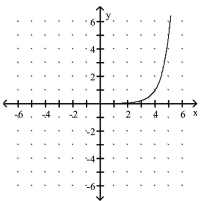
B)
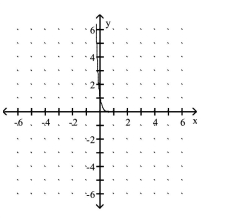
C)
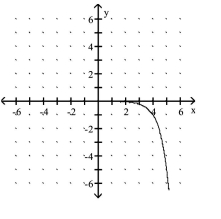
D)
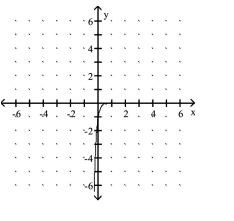
Use the graph of to obtain the graph of

A)

B)

C)

D)

A
3
The graph of an exponential function is given. Select the function for the graph from the functions listed.

A)
B)
C)
D)

A)
B)
C)
D)
A
4
Solve the problem.
The formula models the value of a retirement account, where the number of dollars added to the retirement account each year, the annual interest rate, and the value of the retirement account after t years. If the interest rate is , how much will the account be worth after 15 years if is added each year? Round to the nearest whole number.
A)
B)
C)
D)
The formula models the value of a retirement account, where the number of dollars added to the retirement account each year, the annual interest rate, and the value of the retirement account after t years. If the interest rate is , how much will the account be worth after 15 years if is added each year? Round to the nearest whole number.
A)
B)
C)
D)

Unlock Deck
Unlock for access to all 268 flashcards in this deck.
Unlock Deck
k this deck
5
The graph of an exponential function is given. Select the function for the graph from the functions listed.
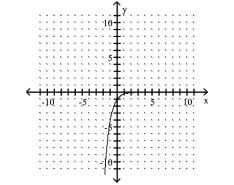
A)
B)
C)
D)

A)
B)
C)
D)

Unlock Deck
Unlock for access to all 268 flashcards in this deck.
Unlock Deck
k this deck
6
The graph of an exponential function is given. Select the function for the graph from the functions listed.
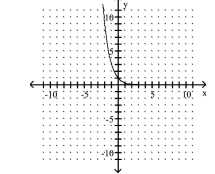
A)
B)
C)
D)

A)
B)
C)
D)

Unlock Deck
Unlock for access to all 268 flashcards in this deck.
Unlock Deck
k this deck
7
Graph the function by making a table of coordinates.
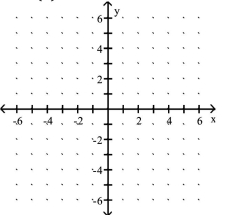
A)
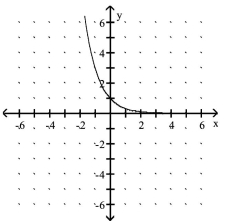
B)
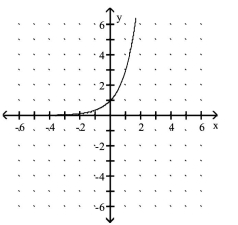
C)
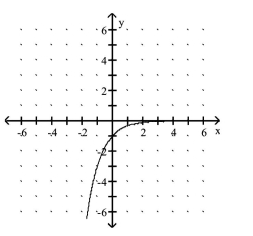
D)
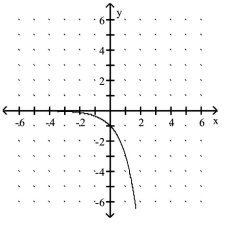

A)

B)

C)

D)


Unlock Deck
Unlock for access to all 268 flashcards in this deck.
Unlock Deck
k this deck
8
Solve the problem.
The rabbit population in a forest area grows at the rate of monthly. If there are 190 rabbits in July, find how many rabbits (rounded to the nearest whole number) should be expected by next July. Use
A) 306
B) 246
C) 319
D) 293
The rabbit population in a forest area grows at the rate of monthly. If there are 190 rabbits in July, find how many rabbits (rounded to the nearest whole number) should be expected by next July. Use
A) 306
B) 246
C) 319
D) 293

Unlock Deck
Unlock for access to all 268 flashcards in this deck.
Unlock Deck
k this deck
9
The graph of an exponential function is given. Select the function for the graph from the functions listed.
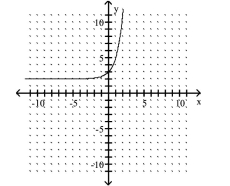
A)
B)
C)
D)

A)
B)
C)
D)

Unlock Deck
Unlock for access to all 268 flashcards in this deck.
Unlock Deck
k this deck
10
Approximate the number using a calculator. Round your answer to three decimal places.
A)
B)
C)
D)
A)
B)
C)
D)

Unlock Deck
Unlock for access to all 268 flashcards in this deck.
Unlock Deck
k this deck
11
Graph the function by making a table of coordinates.
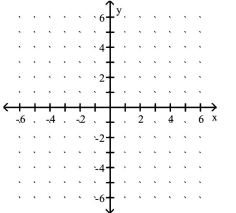
A)
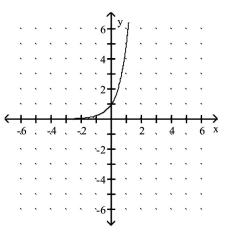
B)
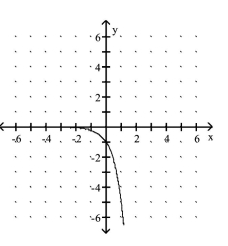
C)
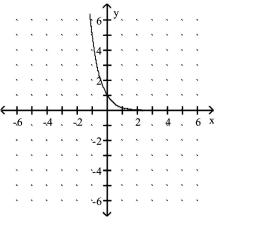
D)
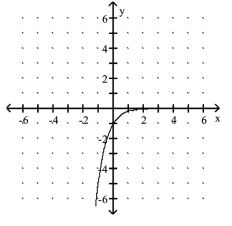

A)

B)

C)

D)


Unlock Deck
Unlock for access to all 268 flashcards in this deck.
Unlock Deck
k this deck
12
The graph of an exponential function is given. Select the function for the graph from the functions listed.
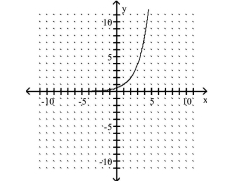
A)
B)
C)
D)

A)
B)
C)
D)

Unlock Deck
Unlock for access to all 268 flashcards in this deck.
Unlock Deck
k this deck
13
The graph of an exponential function is given. Select the function for the graph from the functions listed.
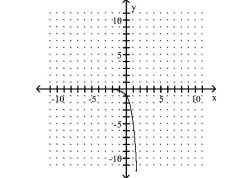
A)
B)
C)
D)

A)
B)
C)
D)

Unlock Deck
Unlock for access to all 268 flashcards in this deck.
Unlock Deck
k this deck
14
Approximate the number using a calculator. Round your answer to three decimal places.
A)
B)
C)
D)
A)
B)
C)
D)

Unlock Deck
Unlock for access to all 268 flashcards in this deck.
Unlock Deck
k this deck
15
Approximate the number using a calculator. Round your answer to three decimal places.
A)
B)
C)
D)
A)
B)
C)
D)

Unlock Deck
Unlock for access to all 268 flashcards in this deck.
Unlock Deck
k this deck
16
Approximate the number using a calculator. Round your answer to three decimal places.
A)
B)
C)
D)
A)
B)
C)
D)

Unlock Deck
Unlock for access to all 268 flashcards in this deck.
Unlock Deck
k this deck
17
Graph the function.
Use the graph of to obtain the graph of
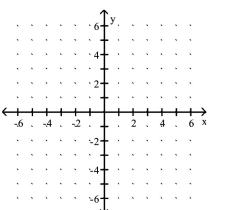
A)
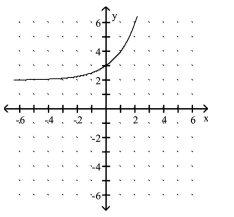
B)
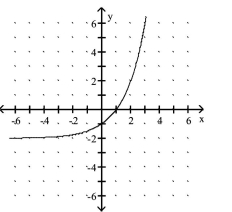
C)

D)
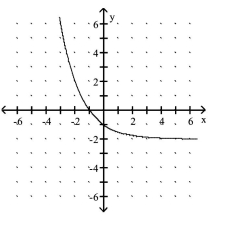
Use the graph of to obtain the graph of

A)

B)

C)

D)


Unlock Deck
Unlock for access to all 268 flashcards in this deck.
Unlock Deck
k this deck
18
Graph the function by making a table of coordinates.
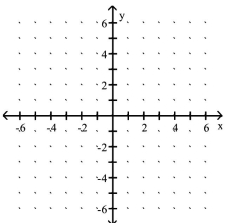
A)
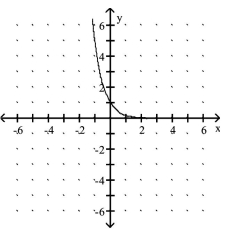
B)
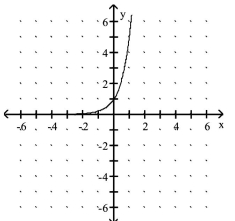
C)
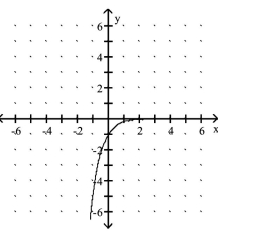
D)
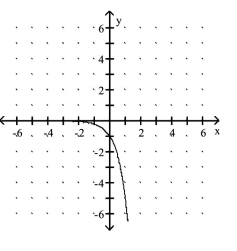

A)

B)

C)

D)


Unlock Deck
Unlock for access to all 268 flashcards in this deck.
Unlock Deck
k this deck
19
Graph the function by making a table of coordinates.
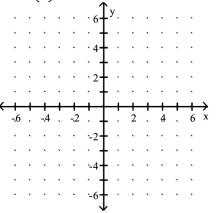
A)
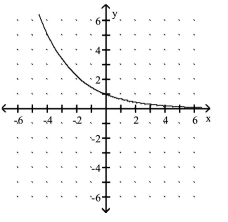
B)

C)
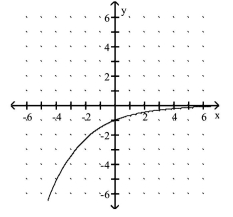
D)
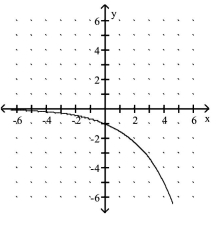

A)

B)

C)

D)


Unlock Deck
Unlock for access to all 268 flashcards in this deck.
Unlock Deck
k this deck
20
Solve the problem.
The function models the amount in pounds of a particular radioactive material stored in a concrete vault, where is the number of years since the material was put into the vault. Find the amount of radioactive material in the vault after 120 years. Round to the nearest whole number.
A) 131 pounds
B) 168 pounds
C) 180 pounds
D) 125 pounds
The function models the amount in pounds of a particular radioactive material stored in a concrete vault, where is the number of years since the material was put into the vault. Find the amount of radioactive material in the vault after 120 years. Round to the nearest whole number.
A) 131 pounds
B) 168 pounds
C) 180 pounds
D) 125 pounds

Unlock Deck
Unlock for access to all 268 flashcards in this deck.
Unlock Deck
k this deck
21
Solve the problem.
The size of the bear population at a national park increases at the rate of per year. If the size of the current population is 157 , find how many bears there should be in 6 years. Use the function and round to the nearest whole number.
A) 207
B) 209
C) 205
D) 211
The size of the bear population at a national park increases at the rate of per year. If the size of the current population is 157 , find how many bears there should be in 6 years. Use the function and round to the nearest whole number.
A) 207
B) 209
C) 205
D) 211

Unlock Deck
Unlock for access to all 268 flashcards in this deck.
Unlock Deck
k this deck
22
Graph the function.
Use the graph of to obtain the graph of

A)
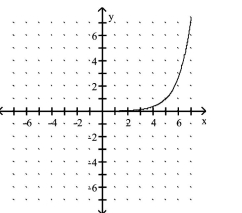
B)
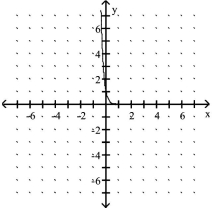
C)
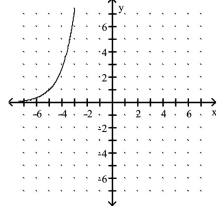
D)
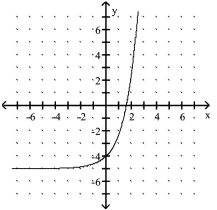
Use the graph of to obtain the graph of

A)

B)

C)

D)


Unlock Deck
Unlock for access to all 268 flashcards in this deck.
Unlock Deck
k this deck
23
Solve the problem.
The function can be used to determine the milligrams of a certain drug in a patient's bloodstream h hours after the drug has been given. How many milligrams (to two decimals) will be present after 11 hours?
A)
B)
C)
D)
The function can be used to determine the milligrams of a certain drug in a patient's bloodstream h hours after the drug has been given. How many milligrams (to two decimals) will be present after 11 hours?
A)
B)
C)
D)

Unlock Deck
Unlock for access to all 268 flashcards in this deck.
Unlock Deck
k this deck
24
Graph the function.
Use the graph of to obtain the graph of .
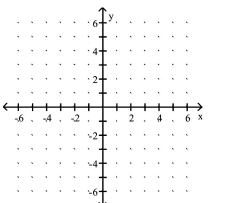
A)
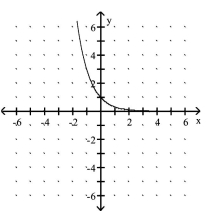
B)
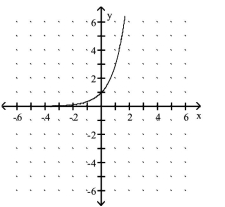
C)
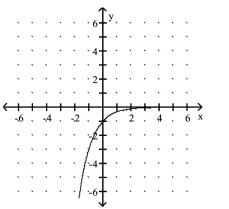
D)

Use the graph of to obtain the graph of .

A)

B)

C)

D)


Unlock Deck
Unlock for access to all 268 flashcards in this deck.
Unlock Deck
k this deck
25
Graph the function.
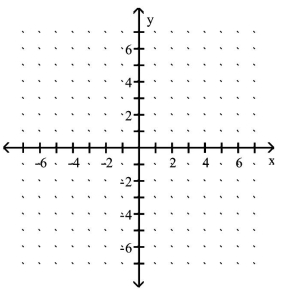
A)
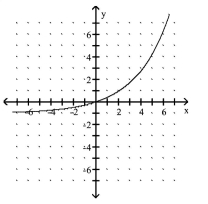
B)
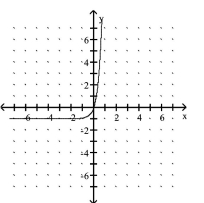
C)
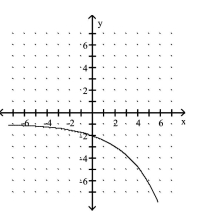
D)


A)

B)

C)

D)


Unlock Deck
Unlock for access to all 268 flashcards in this deck.
Unlock Deck
k this deck
26
Graph the function.
Use the graph of to obtain the graph of

A)
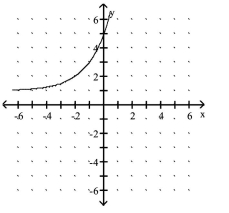
B)
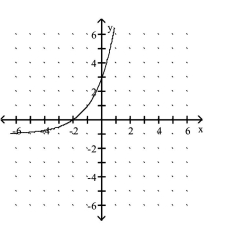
C)
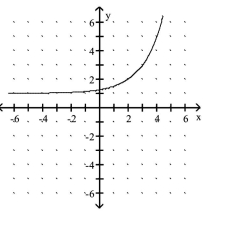
D)
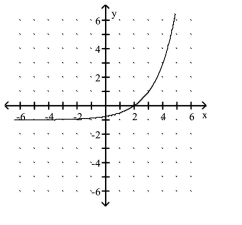
Use the graph of to obtain the graph of

A)

B)

C)

D)


Unlock Deck
Unlock for access to all 268 flashcards in this deck.
Unlock Deck
k this deck
27
Graph the function.
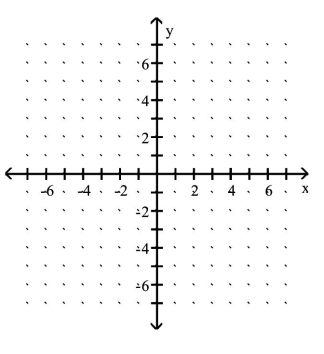
A)
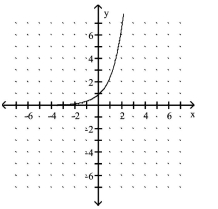
B)
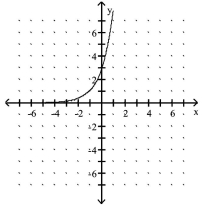
C)
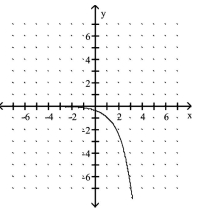
D)


A)

B)

C)

D)


Unlock Deck
Unlock for access to all 268 flashcards in this deck.
Unlock Deck
k this deck
28
Approximate the number using a calculator. Round your answer to three decimal places.
A)
B)
C)
D)
A)
B)
C)
D)

Unlock Deck
Unlock for access to all 268 flashcards in this deck.
Unlock Deck
k this deck
29
Solve the problem.
The population in a particular country is growing at the rate of per year. If people lived there in 1999 , how many will there be in the year 2004 ? Use and round to the nearest ten-thousand.
A)
B)
C)
D)
The population in a particular country is growing at the rate of per year. If people lived there in 1999 , how many will there be in the year 2004 ? Use and round to the nearest ten-thousand.
A)
B)
C)
D)

Unlock Deck
Unlock for access to all 268 flashcards in this deck.
Unlock Deck
k this deck
30
Graph the function.
Use the graph of to obtain the graph of .

A)
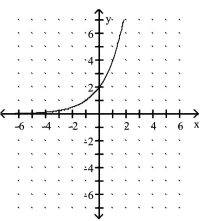
B)
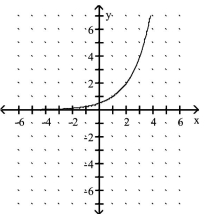
C)
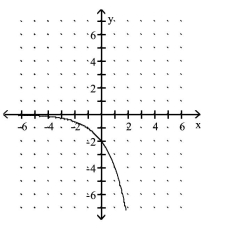
D)
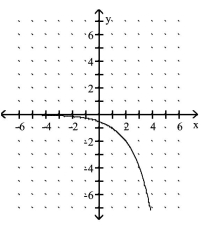
Use the graph of to obtain the graph of .

A)

B)

C)

D)


Unlock Deck
Unlock for access to all 268 flashcards in this deck.
Unlock Deck
k this deck
31
Approximate the number using a calculator. Round your answer to three decimal places.
A)
B)
C)
D)
A)
B)
C)
D)

Unlock Deck
Unlock for access to all 268 flashcards in this deck.
Unlock Deck
k this deck
32
Graph the function.
Use the graph of to obtain the graph of .
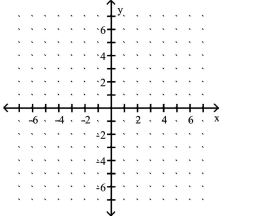
A)
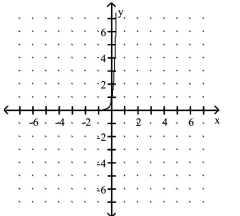
B)
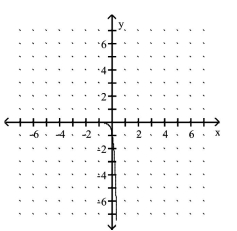
C)
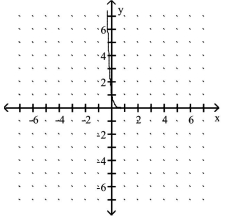
D)
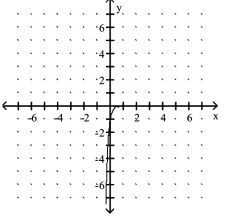
Use the graph of to obtain the graph of .

A)

B)

C)

D)


Unlock Deck
Unlock for access to all 268 flashcards in this deck.
Unlock Deck
k this deck
33
Graph the function.
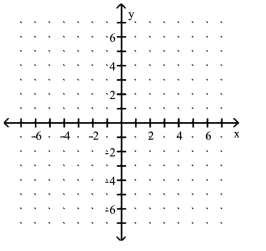
A)
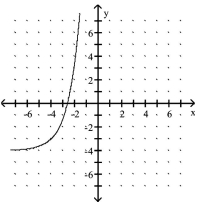
B)
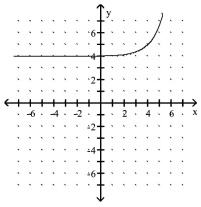
C)
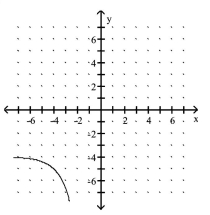
D)
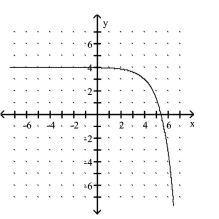

A)

B)

C)

D)


Unlock Deck
Unlock for access to all 268 flashcards in this deck.
Unlock Deck
k this deck
34
Graph the function.
Use the graph of to obtain the graph of .
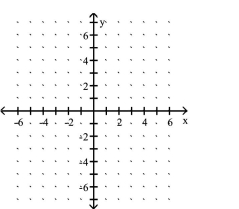
A)
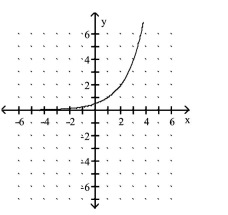
B)
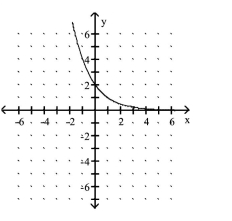
C)
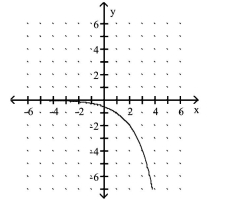
D)
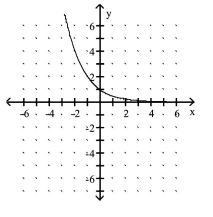
Use the graph of to obtain the graph of .

A)

B)

C)

D)


Unlock Deck
Unlock for access to all 268 flashcards in this deck.
Unlock Deck
k this deck
35
Graph the function.
Use the graph of to obtain the graph of .
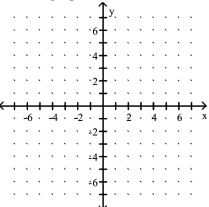
A)
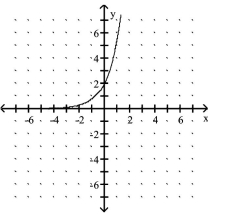
B)

C)
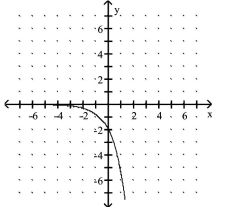
D)
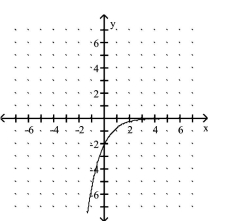
Use the graph of to obtain the graph of .

A)

B)

C)

D)


Unlock Deck
Unlock for access to all 268 flashcards in this deck.
Unlock Deck
k this deck
36
Graph the function.
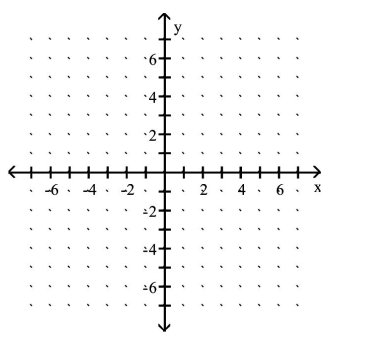
A)
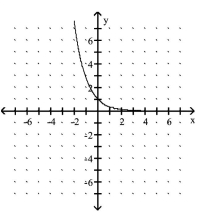
B)
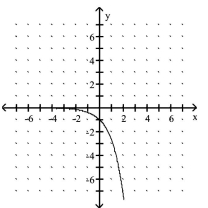
C)
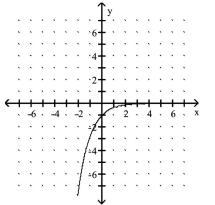
D)
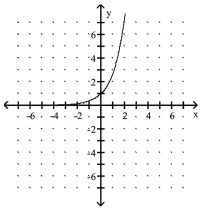

A)

B)

C)

D)


Unlock Deck
Unlock for access to all 268 flashcards in this deck.
Unlock Deck
k this deck
37
Graph the function.
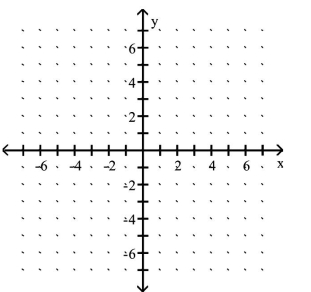
A)
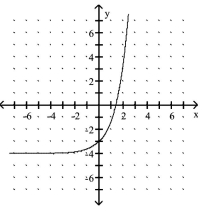
B)
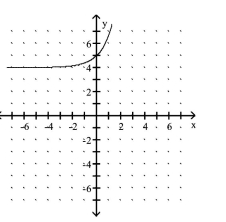
C)
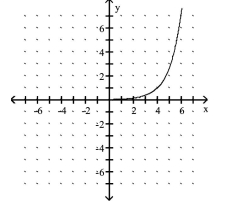
D)
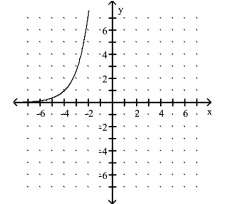

A)

B)

C)

D)


Unlock Deck
Unlock for access to all 268 flashcards in this deck.
Unlock Deck
k this deck
38
Solve the problem.
A sample of of lead-210 decays to polonium-210 according to the function given by , where is time in years. What is the amount of the sample after 60 years (to the nearest g)?
A)
B)
C)
D)
A sample of of lead-210 decays to polonium-210 according to the function given by , where is time in years. What is the amount of the sample after 60 years (to the nearest g)?
A)
B)
C)
D)

Unlock Deck
Unlock for access to all 268 flashcards in this deck.
Unlock Deck
k this deck
39
Graph the function.
Use the graph of to obtain the graph of

A)
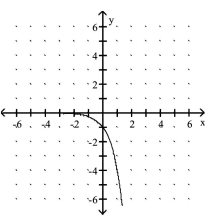
B)
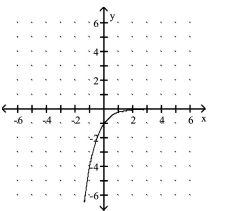
C)
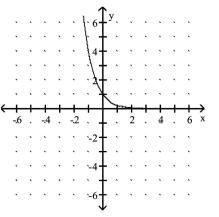
D)
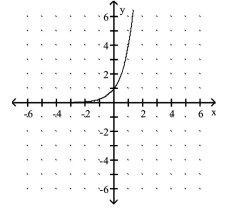
Use the graph of to obtain the graph of

A)

B)

C)

D)


Unlock Deck
Unlock for access to all 268 flashcards in this deck.
Unlock Deck
k this deck
40
Graph the function.

A)
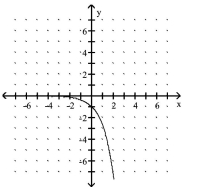
B)
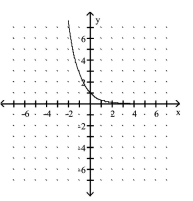
C)

D)
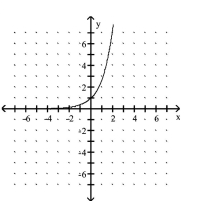

A)

B)

C)

D)


Unlock Deck
Unlock for access to all 268 flashcards in this deck.
Unlock Deck
k this deck
41
Use Compound Interest Formulas
Use the compound interest formulas A
Suppose that you have $11,000 to invest. Which investment yields the greater return over 9 years: 7.5% compounded continuously or 7.6% compounded semiannually?
A)$11,000 invested at 7.5% compounded continuously over 9 years yields the greater return.
B)$11,000 invested at 7.6% compounded semiannually over 9 years yields the greater return.
C)Both investment plans yield the same return.
Use the compound interest formulas A
Suppose that you have $11,000 to invest. Which investment yields the greater return over 9 years: 7.5% compounded continuously or 7.6% compounded semiannually?
A)$11,000 invested at 7.5% compounded continuously over 9 years yields the greater return.
B)$11,000 invested at 7.6% compounded semiannually over 9 years yields the greater return.
C)Both investment plans yield the same return.

Unlock Deck
Unlock for access to all 268 flashcards in this deck.
Unlock Deck
k this deck
42
Write the equation in its equivalent exponential form.
A)
B)
C)
D)
A)
B)
C)
D)

Unlock Deck
Unlock for access to all 268 flashcards in this deck.
Unlock Deck
k this deck
43
Write the equation in its equivalent exponential form.
A)
B)
C)
D)
A)
B)
C)
D)

Unlock Deck
Unlock for access to all 268 flashcards in this deck.
Unlock Deck
k this deck
44
Write the equation in its equivalent logarithmic form.
A)
B)
C)
D)
A)
B)
C)
D)

Unlock Deck
Unlock for access to all 268 flashcards in this deck.
Unlock Deck
k this deck
45
Write the equation in its equivalent logarithmic form.
A)
B)
C)
D)
A)
B)
C)
D)

Unlock Deck
Unlock for access to all 268 flashcards in this deck.
Unlock Deck
k this deck
46
Write the equation in its equivalent logarithmic form.
A)
B)
C)
D)
A)
B)
C)
D)

Unlock Deck
Unlock for access to all 268 flashcards in this deck.
Unlock Deck
k this deck
47
Use Compound Interest Formulas
Use the compound interest formulas A
Find the accumulated value of an investment of $19,000 at 8% compounded annually for 10 years.
A)$41,019.57
B)$37,981.09
C)$32,680.00
D)$34,200.00
Use the compound interest formulas A
Find the accumulated value of an investment of $19,000 at 8% compounded annually for 10 years.
A)$41,019.57
B)$37,981.09
C)$32,680.00
D)$34,200.00

Unlock Deck
Unlock for access to all 268 flashcards in this deck.
Unlock Deck
k this deck
48
Use Compound Interest Formulas
Use the compound interest formulas A
Find the accumulated value of an investment of $6000 at 7% compounded continuously for 5 years.
A)$8514.41
B)$8614.41
C)$8415.31
D)$8100.00
Use the compound interest formulas A
Find the accumulated value of an investment of $6000 at 7% compounded continuously for 5 years.
A)$8514.41
B)$8614.41
C)$8415.31
D)$8100.00

Unlock Deck
Unlock for access to all 268 flashcards in this deck.
Unlock Deck
k this deck
49
Write the equation in its equivalent logarithmic form.
A)
B)
C)
D)
A)
B)
C)
D)

Unlock Deck
Unlock for access to all 268 flashcards in this deck.
Unlock Deck
k this deck
50
Use Compound Interest Formulas
Use the compound interest formulas A
Find the accumulated value of an investment of $2000 at 10% compounded semiannually for 7 years.
A)$3959.86
B)$3897.43
C)$2814.20
D)$3400.00
Use the compound interest formulas A
Find the accumulated value of an investment of $2000 at 10% compounded semiannually for 7 years.
A)$3959.86
B)$3897.43
C)$2814.20
D)$3400.00

Unlock Deck
Unlock for access to all 268 flashcards in this deck.
Unlock Deck
k this deck
51
Use Compound Interest Formulas
Use the compound interest formulas A
Suppose that you have $10,000 to invest. Which investment yields the greater return over 6 years: 5.4% compounded monthly or 5.5% compounded quarterly?
A)$10,000 invested at 5.5% compounded quarterly over 6 years yields the greater return.
B)$10,000 invested at 5.4% compounded monthly over 6 years yields the greater return.
C)Both investment plans yield the same return.
Use the compound interest formulas A
Suppose that you have $10,000 to invest. Which investment yields the greater return over 6 years: 5.4% compounded monthly or 5.5% compounded quarterly?
A)$10,000 invested at 5.5% compounded quarterly over 6 years yields the greater return.
B)$10,000 invested at 5.4% compounded monthly over 6 years yields the greater return.
C)Both investment plans yield the same return.

Unlock Deck
Unlock for access to all 268 flashcards in this deck.
Unlock Deck
k this deck
52
Use Compound Interest Formulas
Use the compound interest formulas A
Find the accumulated value of an investment of $1230 at 6% compounded annually for 5 years.
A)$1646.02
B)$1552.85
C)$1525.20
D)$1599.00
Use the compound interest formulas A
Find the accumulated value of an investment of $1230 at 6% compounded annually for 5 years.
A)$1646.02
B)$1552.85
C)$1525.20
D)$1599.00

Unlock Deck
Unlock for access to all 268 flashcards in this deck.
Unlock Deck
k this deck
53
Write the equation in its equivalent logarithmic form.
A)
B)
C)
D)
A)
B)
C)
D)

Unlock Deck
Unlock for access to all 268 flashcards in this deck.
Unlock Deck
k this deck
54
Use Compound Interest Formulas
Use the compound interest formulas A
Find the accumulated value of an investment of $900 at 10% compounded quarterly for 5 years.
A)$1474.75
B)$1449.46
C)$1018.27
D)$1350.00
Use the compound interest formulas A
Find the accumulated value of an investment of $900 at 10% compounded quarterly for 5 years.
A)$1474.75
B)$1449.46
C)$1018.27
D)$1350.00

Unlock Deck
Unlock for access to all 268 flashcards in this deck.
Unlock Deck
k this deck
55
Use Compound Interest Formulas
Use the compound interest formulas A
Find the accumulated value of an investment of $5000 at 5% compounded monthly for 8 years.
A)$7452.93
B)$12,911.25
C)$9093.60
D)$8060.16
Use the compound interest formulas A
Find the accumulated value of an investment of $5000 at 5% compounded monthly for 8 years.
A)$7452.93
B)$12,911.25
C)$9093.60
D)$8060.16

Unlock Deck
Unlock for access to all 268 flashcards in this deck.
Unlock Deck
k this deck
56
Write the equation in its equivalent exponential form.
A)
B)
C)
D)
A)
B)
C)
D)

Unlock Deck
Unlock for access to all 268 flashcards in this deck.
Unlock Deck
k this deck
57
Evaluate the expression without using a calculator.
A) 2
B) 4
C)
D) 1
A) 2
B) 4
C)
D) 1

Unlock Deck
Unlock for access to all 268 flashcards in this deck.
Unlock Deck
k this deck
58
Write the equation in its equivalent logarithmic form.
A)
B)
C)
D)
A)
B)
C)
D)

Unlock Deck
Unlock for access to all 268 flashcards in this deck.
Unlock Deck
k this deck
59
Write the equation in its equivalent exponential form.
A)
B)
C)
D)
A)
B)
C)
D)

Unlock Deck
Unlock for access to all 268 flashcards in this deck.
Unlock Deck
k this deck
60
Write the equation in its equivalent logarithmic form.
A)
B)
C)
D)
A)
B)
C)
D)

Unlock Deck
Unlock for access to all 268 flashcards in this deck.
Unlock Deck
k this deck
61
The graph of a logarithmic function is given. Select the function for the graph from the options.
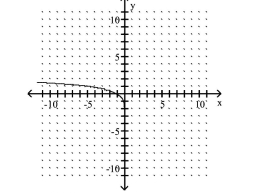
A)
B)
C)
D)

A)
B)
C)
D)

Unlock Deck
Unlock for access to all 268 flashcards in this deck.
Unlock Deck
k this deck
62
Evaluate the expression without using a calculator.
A)
B) 8
C)
D) 1
A)
B) 8
C)
D) 1

Unlock Deck
Unlock for access to all 268 flashcards in this deck.
Unlock Deck
k this deck
63
Evaluate the expression without using a calculator.
A) 18
B) 8
C) 26
D)
A) 18
B) 8
C) 26
D)

Unlock Deck
Unlock for access to all 268 flashcards in this deck.
Unlock Deck
k this deck
64
Evaluate the expression without using a calculator.
A) 0
B) 12
C)
D) 1
A) 0
B) 12
C)
D) 1

Unlock Deck
Unlock for access to all 268 flashcards in this deck.
Unlock Deck
k this deck
65
The graph of a logarithmic function is given. Select the function for the graph from the options.
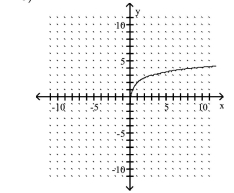
A)
B)
C)
D)

A)
B)
C)
D)

Unlock Deck
Unlock for access to all 268 flashcards in this deck.
Unlock Deck
k this deck
66
Graph the function.
Use the graph of to obtain the graph of .
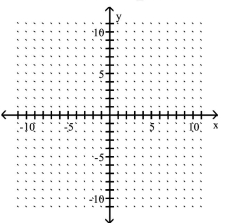
A)
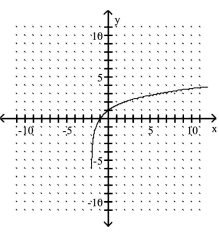
B)
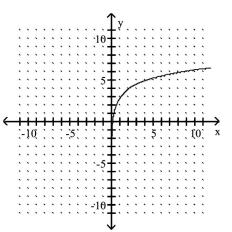
C)
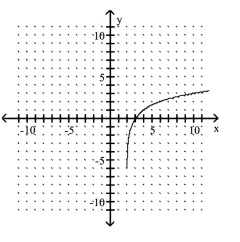
D)

Use the graph of to obtain the graph of .

A)

B)

C)

D)


Unlock Deck
Unlock for access to all 268 flashcards in this deck.
Unlock Deck
k this deck
67
Graph the function.
Use the graph of to obtain the graph of .

A)
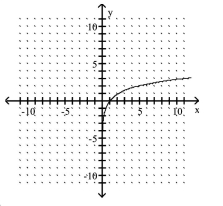
B)
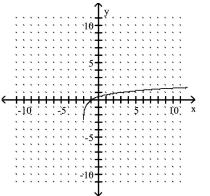
C)
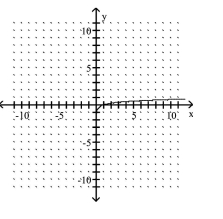
D)
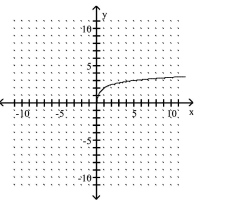
Use the graph of to obtain the graph of .

A)

B)

C)

D)


Unlock Deck
Unlock for access to all 268 flashcards in this deck.
Unlock Deck
k this deck
68
The graph of a logarithmic function is given. Select the function for the graph from the options.
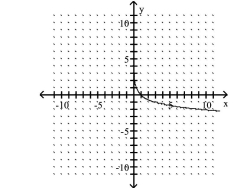
A)
B)
C)
D)

A)
B)
C)
D)

Unlock Deck
Unlock for access to all 268 flashcards in this deck.
Unlock Deck
k this deck
69
Evaluate the expression without using a calculator.
A) 3
B) 30
C)
D) 1000
A) 3
B) 30
C)
D) 1000

Unlock Deck
Unlock for access to all 268 flashcards in this deck.
Unlock Deck
k this deck
70
Evaluate the expression without using a calculator.
A) 1
B) 10
C)
D) 0
A) 1
B) 10
C)
D) 0

Unlock Deck
Unlock for access to all 268 flashcards in this deck.
Unlock Deck
k this deck
71
The graph of a logarithmic function is given. Select the function for the graph from the options.
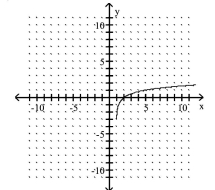
A)
B)
C)
D)

A)
B)
C)
D)

Unlock Deck
Unlock for access to all 268 flashcards in this deck.
Unlock Deck
k this deck
72
The graph of a logarithmic function is given. Select the function for the graph from the options.
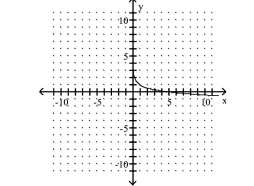
A)
B)
C)
D)

A)
B)
C)
D)

Unlock Deck
Unlock for access to all 268 flashcards in this deck.
Unlock Deck
k this deck
73
Evaluate the expression without using a calculator.
A)
B) 8
C) 2
D) 1
A)
B) 8
C) 2
D) 1

Unlock Deck
Unlock for access to all 268 flashcards in this deck.
Unlock Deck
k this deck
74
The graph of a logarithmic function is given. Select the function for the graph from the options.
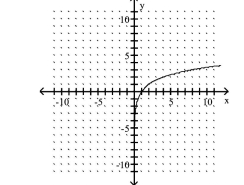
A)
B)
C)
D)

A)
B)
C)
D)

Unlock Deck
Unlock for access to all 268 flashcards in this deck.
Unlock Deck
k this deck
75
Evaluate the expression without using a calculator.
A) 4
B) 81
C) 12
D) 3
A) 4
B) 81
C) 12
D) 3

Unlock Deck
Unlock for access to all 268 flashcards in this deck.
Unlock Deck
k this deck
76
Evaluate the expression without using a calculator.
A)
B) 8
C)
D) 1 )1
A)
B) 8
C)
D) 1 )1

Unlock Deck
Unlock for access to all 268 flashcards in this deck.
Unlock Deck
k this deck
77
Evaluate the expression without using a calculator.
A)
B) 8
C)
D) 2
A)
B) 8
C)
D) 2

Unlock Deck
Unlock for access to all 268 flashcards in this deck.
Unlock Deck
k this deck
78
Graph the function.
Use the graph of to obtain the graph of .
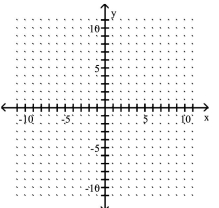
A)
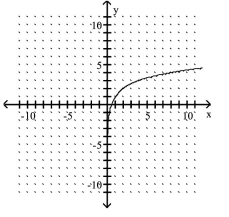
B)
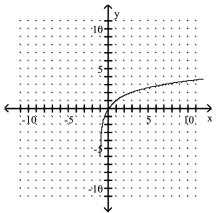
C)
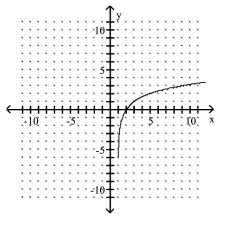
D)
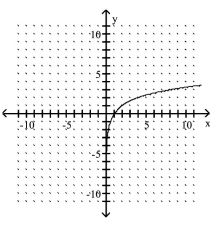
Use the graph of to obtain the graph of .

A)

B)

C)

D)


Unlock Deck
Unlock for access to all 268 flashcards in this deck.
Unlock Deck
k this deck
79
Evaluate the expression without using a calculator.
A)
B)
C)
D)
A)
B)
C)
D)

Unlock Deck
Unlock for access to all 268 flashcards in this deck.
Unlock Deck
k this deck
80
Evaluate the expression without using a calculator.
A) 19
B) 8
C) 27
D)
A) 19
B) 8
C) 27
D)

Unlock Deck
Unlock for access to all 268 flashcards in this deck.
Unlock Deck
k this deck



